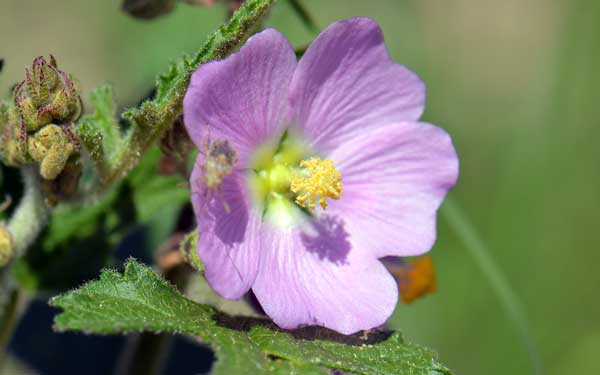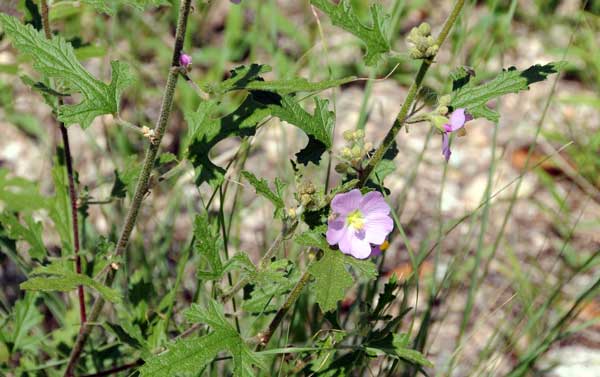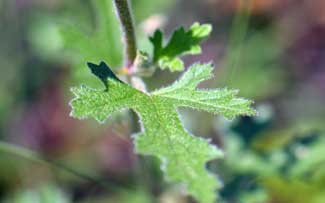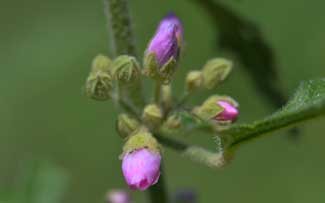Sphaeralcea fendleri, Fendler’s Globemallow




Scientific Name: Sphaeralcea fendleri
Common Name: Fendler’s Globemallow
Also called: Fendler Globe Mallow, Thicket Globe-mallow (Spanish: Mal de Ojo, Yerba de la Negrita)
Family: Malvaceae, Mallow Family
Synonyms: ()
Status: Native
Duration: Perennial
Size: Up to 4 feet
Growth Form: Forb/herb, subshrub, erect, stems with grayish or whitish pubescence.
Leaves: Green, alternate, star-like hairs (stellate), palmately 3 lobed, leaf shape highly variable, margins scalloped
Flower Color: Variable, pink or orange, showy, hibiscus like, 5 petals, 5 sepals, flowers single or small clusters borne in leaf axils
Flowering Season: Summer and fall
Elevation: 3,000 to 8,000 feet.
Habitat Preferences: Upper Sonoran desert habitats, more prevalent in higher elevations such as pine and oak communities.
Recorded Range: Southwestern United States; AZ, CO, KS, MA, NM and TX. Also found in northern Mexico. Found in northern, eastern and southern Arizona above 3,000 feet.
North America & US County Distribution Map for Sphaeralcea fendleri.
U.S. Weed Information: No data available.
Invasive/Noxious Weed Information: No data available.
Wetland Indicator: No data available.
Threatened/Endangered Information: No data available.
Comments: Fendler’s Globemallow is a conspicuous Globemallow that should not be considered a desert species, preferring pine and oak habitats instead. Several uses have been identified for Fendler’s Globemallow including its use as an infusion of plant used as lotion for external injury and for sore mouth and to sooth insect bites.
In Southwest Desert Flora also see: Desert Globemallow, Sphaeralcea ambigua; Scarlet Globemallow, Sphaeralcea coccinea; Coulter's Globemallow, Sphaeralcea coulteri; and Rusby's Globemallow, Sphaeralcea rusbyi.
See species account from Native American Ethnobotany, University of Michigan, Dearborn.

